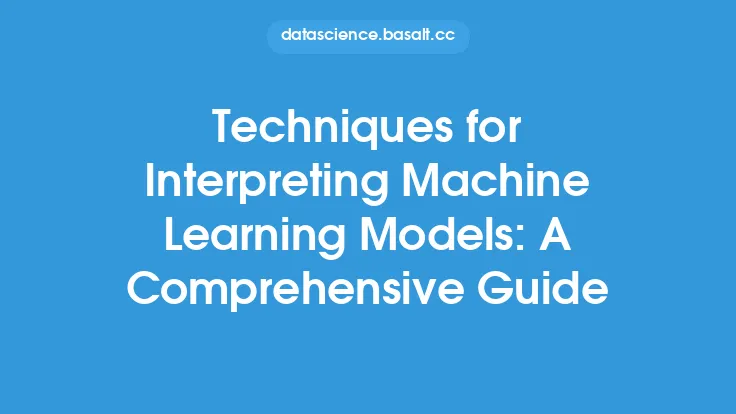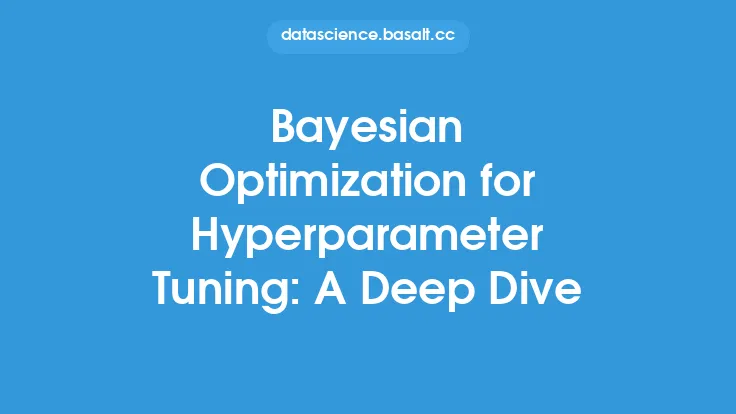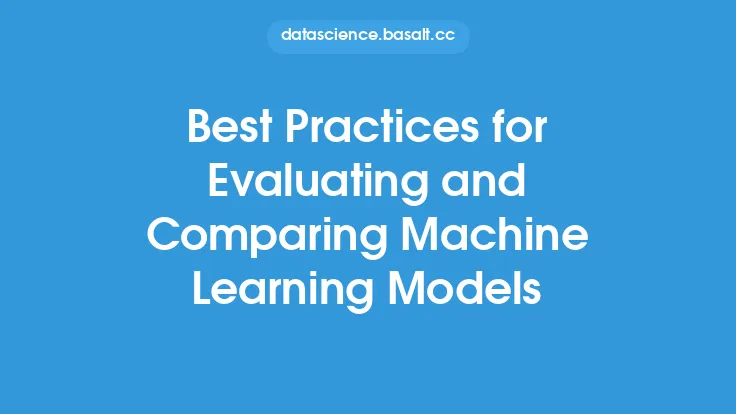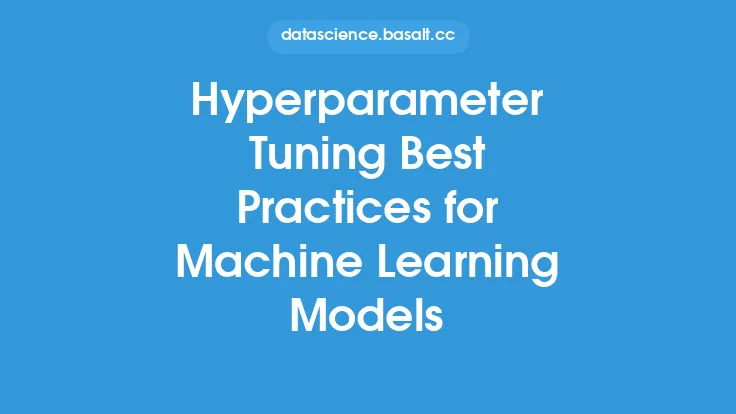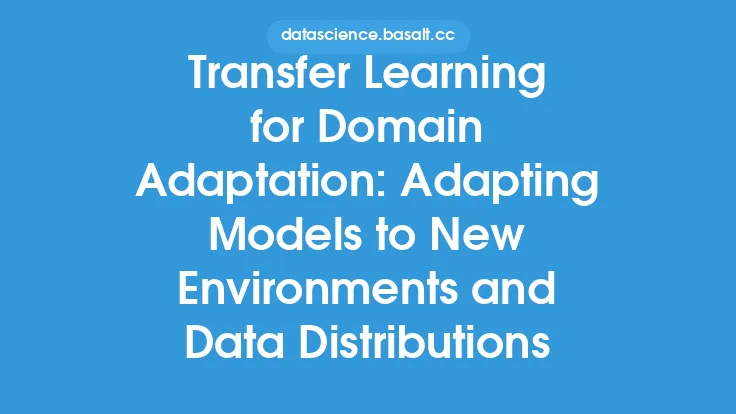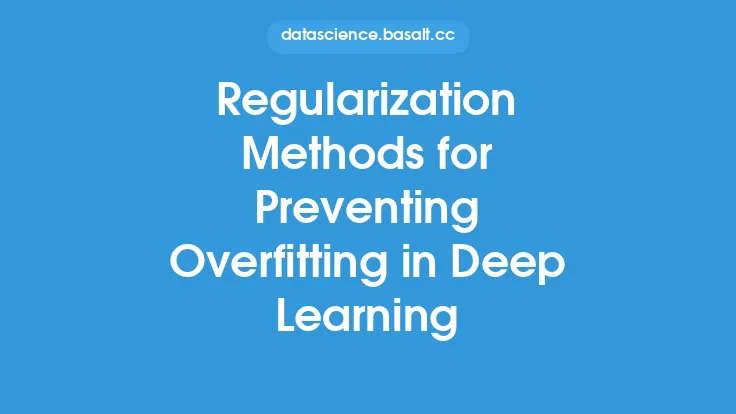Deep learning models have revolutionized the field of machine learning, achieving state-of-the-art performance in various tasks such as image classification, natural language processing, and speech recognition. However, training deep learning models can be computationally expensive and time-consuming, requiring significant resources and expertise. To overcome these challenges, optimization techniques play a crucial role in improving the performance and efficiency of deep learning models. In this article, we will delve into the world of optimization techniques for deep learning models, exploring the various methods and strategies used to optimize their performance.
Introduction to Optimization Techniques
Optimization techniques are methods used to improve the performance of deep learning models by minimizing the loss function and maximizing the accuracy. The goal of optimization is to find the best set of model parameters that result in the lowest loss and highest accuracy. There are several optimization techniques used in deep learning, including stochastic gradient descent (SGD), momentum-based methods, and adaptive learning rate methods. Each technique has its strengths and weaknesses, and the choice of optimization technique depends on the specific problem and model architecture.
Stochastic Gradient Descent (SGD) and its Variants
Stochastic gradient descent (SGD) is a widely used optimization technique in deep learning. SGD works by iteratively updating the model parameters in the direction of the negative gradient of the loss function. The update rule for SGD is given by: `w = w - α * ∇L(w)`, where `w` is the model parameter, `α` is the learning rate, and `∇L(w)` is the gradient of the loss function. SGD has several variants, including mini-batch SGD, which uses a small batch of samples to compute the gradient, and SGD with momentum, which adds a momentum term to the update rule to escape local minima.
Momentum-Based Methods
Momentum-based methods are a class of optimization techniques that add a momentum term to the update rule to escape local minima and improve convergence. The momentum term is calculated as a fraction of the previous update, and it helps to stabilize the update rule and prevent oscillations. Some popular momentum-based methods include SGD with momentum, Nesterov accelerated gradient (NAG), and Adam. Adam, in particular, has become a popular choice in deep learning due to its ability to adapt the learning rate for each parameter based on the magnitude of the gradient.
Adaptive Learning Rate Methods
Adaptive learning rate methods are a class of optimization techniques that adjust the learning rate based on the magnitude of the gradient. These methods are useful when the gradient is large, as they help to prevent overshooting and improve convergence. Some popular adaptive learning rate methods include Adagrad, Adadelta, and RMSprop. Adagrad, for example, adapts the learning rate for each parameter based on the magnitude of the gradient, while Adadelta adapts the learning rate based on the magnitude of the gradient and the previous update.
Second-Order Optimization Methods
Second-order optimization methods are a class of optimization techniques that use the Hessian matrix to compute the update rule. The Hessian matrix is a matrix of second derivatives of the loss function, and it provides information about the curvature of the loss function. Second-order methods, such as Newton's method and quasi-Newton methods, are useful when the Hessian matrix is available, as they provide a more accurate estimate of the update rule. However, computing the Hessian matrix can be computationally expensive, and second-order methods are often used in conjunction with first-order methods.
Optimization Techniques for Deep Neural Networks
Deep neural networks (DNNs) are a class of deep learning models that consist of multiple layers of neurons. Optimizing DNNs requires careful consideration of the model architecture, loss function, and optimization technique. Some popular optimization techniques for DNNs include SGD with momentum, Adam, and RMSprop. Additionally, techniques such as batch normalization, dropout, and weight decay are often used to regularize the model and prevent overfitting.
Hyperparameter Tuning
Hyperparameter tuning is the process of selecting the best set of hyperparameters for a deep learning model. Hyperparameters are parameters that are set before training the model, such as the learning rate, batch size, and number of epochs. Hyperparameter tuning can be performed using various methods, including grid search, random search, and Bayesian optimization. Grid search involves searching over a grid of hyperparameters, while random search involves randomly sampling the hyperparameter space. Bayesian optimization involves using a probabilistic model to search for the optimal hyperparameters.
Distributed Optimization
Distributed optimization is a technique used to optimize deep learning models on large-scale datasets. Distributed optimization involves splitting the dataset into smaller chunks and training the model on each chunk in parallel. This approach can significantly reduce the training time and improve the scalability of deep learning models. Some popular distributed optimization techniques include data parallelism, model parallelism, and pipeline parallelism. Data parallelism involves splitting the dataset into smaller chunks and training the model on each chunk in parallel, while model parallelism involves splitting the model into smaller chunks and training each chunk in parallel.
Conclusion
Optimization techniques play a crucial role in improving the performance and efficiency of deep learning models. From stochastic gradient descent to adaptive learning rate methods, there are various techniques used to optimize deep learning models. Understanding the strengths and weaknesses of each technique is essential for selecting the best optimization technique for a specific problem and model architecture. Additionally, hyperparameter tuning, distributed optimization, and regularization techniques are essential for achieving state-of-the-art performance in deep learning. By mastering these optimization techniques, practitioners can unlock the full potential of deep learning models and achieve significant improvements in performance and efficiency.
